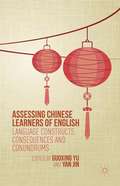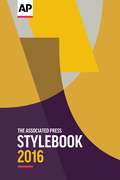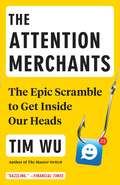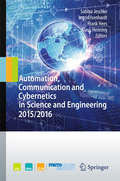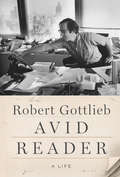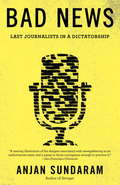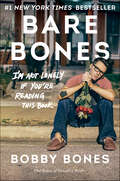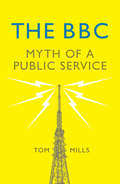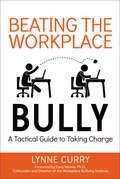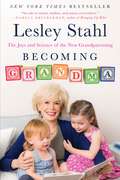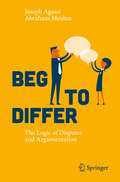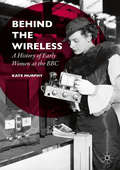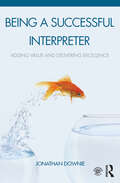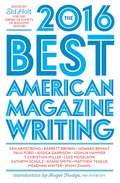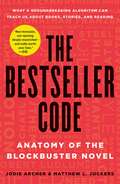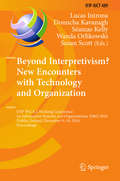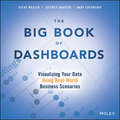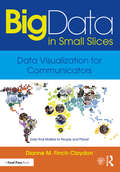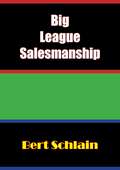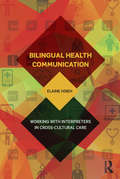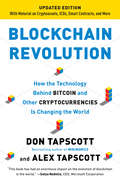- Table View
- List View
Articulation and Phonology In Speech Sound Disorders: A Clinical Focus
by Jacqueline Bauman-WaenglerThis comprehensive book ties strong academic foundations directly to their clinical application for speech/language therapists working with speech sound disorders. Each chapter presents tools to help readers bridge the gap between theoretical issues and clinical applications by presenting Clinical Applications, Clinical Exercises, Case Studies, and a section called Think Critically, which asks students to further apply specific clinical concepts. Test Yourself multiple choice questions appear at the end of each chapter and are ideal for review and assessment of the knowledge presented in the chapters, and Further Readings allow readers to continue to expand their knowledge. The new Fifth Edition of Articulation and Phonology in Speech Sound Disorders reflects the current use of the term "speech sound disorder," an umbrella term for what was previously noted as articulation- and phonemic-based disorders.
Assessing Chinese Learners of English: Language Constructs, Consequences And Conundrums
by Guoxing YuThis volume gathers researchers from around the world endeavouring to better understand a number of perennial issues in assessing Chinese learners of English, covering topics such as students' test performances, interactional competence and lexical knowledge, students' motivation, teachers' attitudes and assessment policy changes.
The Associated Press Stylebook 2016
by The Associated PressThe 2016 edition of The Associated Press Stylebook and Briefing on Media Law includes nearly 250 new or revised entries – including lowercasing internet and web.The AP Stylebook is widely used as a writing and editing reference in newsrooms, classrooms and corporate offices worldwide. Updated regularly since its initial publication in 1953, the AP Stylebook provides fundamental guidelines for spelling, language, punctuation, usage and journalistic style. It is the definitive resource for journalists.Changes in the 2016 Stylebook include:• 50 new and updated technology terms, including emoji, emoticon and metadata• 36 new and updated entries in the food chapter, from arctic char to whisky/whiskey, and eight new and updated entries in the fashion chapter, including normcore and Uniqlo• New entries discouraging the use of child prostitute and mistress; restricting spree to shopping or revelry, not killing; and using the number of firefighters or quantity of equipment sent to a fire, not the number of alarms• DJ is now allowed on first reference, and spokesperson is recognized, in addition to spokesman and spokeswoman• New guidance on the terms marijuana, cannabis and pot; cross dresser and transvestite; accident and crash; notorious and notoriety• A new entry on data journalismWith invaluable additional sections on the unique guidelines for business and sports reporting and on how you can guard against libel and copyright infringement, The AP Stylebook is the one reference that all writers, editors and students cannot afford to be without.
The Attention Merchants: The Epic Scramble to Get Inside Our Heads
by Tim WuFrom Tim Wu, author of the award-winning The Master Switch and who coined the phrase "net neutrality"--a revelatory look at the rise of "attention harvesting," and its transformative effect on our society and our selves. Attention merchant: an industrial-scale harvester of human attention. A firm whose business model is the mass capture of attention for resale to advertisers.In nearly every moment of our waking lives, we face a barrage of advertising enticements, branding efforts, sponsored social media, commercials and other efforts to harvest our attention. Over the last century, few times or spaces have remained uncultivated by the "attention merchants," contributing to the distracted, unfocused tenor of our times. Tim Wu argues that this is not simply the byproduct of recent inventions but the end result of more than a century's growth and expansion in the industries that feed on human attention. From the pre-Madison Avenue birth of advertising to TV's golden age to our present age of radically individualized choices, the business model of "attention merchants" has always been the same. He describes the revolts that have risen against these relentless attempts to influence our consumption, from the remote control to FDA regulations to Apple's ad-blocking OS. But he makes clear that attention merchants grow ever-new heads, and their means of harvesting our attention have given rise to the defining industries of our time, changing our nature--cognitive, social, and otherwise--in ways unimaginable even a generation ago.From the Hardcover edition.
Automation, Communication and Cybernetics in Science and Engineering 2015/2016
by Sabina Jeschke Ingrid Isenhardt Frank Hees Klaus HenningAutomation, Communication and Cybernetics in Science and Engineering 2015/2016
Avid Reader: A Life
by Robert GottliebA spirited and revealing memoir by the most celebrated editor of his timeAfter editing The Columbia Review, staging plays at Cambridge, and a stint in the greeting-card department of Macy's, Robert Gottlieb stumbled into a job at Simon and Schuster. By the time he left to run Alfred A. Knopf a dozen years later, he was the editor in chief, having discovered and edited Catch-22 and The American Way of Death, among other bestsellers. At Knopf, Gottlieb edited an astonishing list of authors, including Toni Morrison, John Cheever, Doris Lessing, John le Carré, Michael Crichton, Lauren Bacall, Katharine Graham, Robert Caro, Nora Ephron, and Bill Clinton--not to mention Bruno Bettelheim and Miss Piggy. In Avid Reader, Gottlieb writes with wit and candor about succeeding William Shawn as the editor of The New Yorker, and the challenges and satisfactions of running America's preeminent magazine. Sixty years after joining Simon and Schuster, Gottlieb is still at it--editing, anthologizing, and, to his surprise, writing.But this account of a life founded upon reading is about more than the arc of a singular career--one that also includes a lifelong involvement with the world of dance. It's about transcendent friendships and collaborations, "elective affinities" and family, psychoanalysis and Bakelite purses, the alchemical relationship between writer and editor, the glory days of publishing, and--always--the sheer exhilaration of work.Photograph of Bob Gottlieb © by Jill Krementz
Bad News
by Anjan SundaramAuthor of the acclaimed Stringer, praised by Jon Stewart as "a remarkable book about the lives of people in the Congo," Anjan Sundaram returns to Africa for a piercing look at Rwanda, a country still caught in political and social unrest years after the genocide that shocked the world. Bad News is the story of Anjan Sundaram's time teaching a class of journalists in Kigali, the capital city of Rwanda. The current Rwandan regime, which seized power after the genocide in 1994, is often held up as a beacon of progress and is the recipient of billions of dollars each year in aid from Western governments. Underpinning this shining vision of a modern orderly state, however, is a powerful climate of fear springing from the government's brutal treatment of any voice of dissent. "You cannot look and write," a policeman tells Sundaram as he takes notes at a political rally. As Sundaram's students are exiled, imprisoned, recruited as well-paid propagandists, and even shot, he tries frantically to preserve a last bastion of debate in a country where the testimony of the individual is crushed by the ways of thinking prescribed by Paul Kagame's dictatorial regime. A vivid portrait of a country at an extraordinary and dangerous place in its history, Bad News is a brilliant and urgent parable on the necessity of freedom of expression and what happens when that freedom is seized.From the Hardcover edition.
Bad News
by Anjan SundaramThe author of the acclaimed Stringer: A Reporter's Journey in the Congo now moves on to Rwanda for a gripping look at a country caught still in political and social unrest, years after the genocide that shocked the world. Bad News is the story of Anjan Sundaram's time running a journalist's training program out of Kigali, the capital city of one of Africa's most densely populated countries, Rwanda. President Kagame's regime, which seized power after the genocide that ravaged its population in 1994, is often held up as a beacon for progress and modernity in Central Africa and is the recipient of billions of dollars each year in aid from Western governments and international organizations. Lurking underneath this shining vision of a modern, orderly state, however, is the powerful climate of fear springing from the government's brutal treatment of any voice of dissent. "You can't look and write," a policeman ominously tells Sundaram, as he takes notes at a political rally. In Rwanda, the testimony of the individual--the evidence of one's own experience--is crushed by the pensée unique: the single way of thinking and speaking, proscribed by those in power. A vivid portrait of a country at an extraordinary and dangerous place in its history, Bad News is a brilliant and urgent parable on freedom of expression, and what happens when that power is seized.
Bad News: Last Journalists in a Dictatorship
by Anjan SundaramThe author of the acclaimed Stringer: A Reporter's Journey in the Congo now moves on to Rwanda for a gripping look at a country caught still in political and social unrest, years after the genocide that shocked the world. Bad News is the story of Anjan Sundaram's time running a journalist's training program out of Kigali, the capital city of one of Africa's most densely populated countries, Rwanda. President Kagame's regime, which seized power after the genocide that ravaged its population in 1994, is often held up as a beacon for progress and modernity in Central Africa and is the recipient of billions of dollars each year in aid from Western governments and international organizations. Lurking underneath this shining vision of a modern, orderly state, however, is the powerful climate of fear springing from the government's brutal treatment of any voice of dissent. "You can't look and write," a policeman ominously tells Sundaram, as he takes notes at a political rally. In Rwanda, the testimony of the individual--the evidence of one's own experience--is crushed by the pensée unique: the single way of thinking and speaking, proscribed by those in power. A vivid portrait of a country at an extraordinary and dangerous place in its history, Bad News is a brilliant and urgent parable on freedom of expression, and what happens when that power is seized.
Bare Bones: I'm Not Lonely If You're Reading This Book
by Bobby Bones#1 New York Times BestsellerA touching, funny, heart-wrenching, and triumphant memoir from one of the biggest names in radio, the host of The Bobby Bones Show, one of the most listened-to drive time morning radio shows in the nation.Growing up poor in Mountain Pine, Arkansas, with a young, addicted mom, Bobby Estell fell in love with country music. Abandoned by his father at the age of five, Bobby saw the radio as his way out—a dream that came true in college when he went on air at the Henderson State University campus station broadcasting as Bobby Bones, while simultaneously starting The Bobby Bones Show at 105.9 KLAZ. Bobby’s passions were pop, country music, and comedy, and he blended the three to become a tastemaker in the country music industry, heard by millions daily. Bobby broke the format of standard country radio, mixing country and pop with entertainment news and information, and has interviewed some of the biggest names in the business, including Luke Bryan, Taylor Swift, Blake Shelton, Tim McGraw, Lady Antebellum, and Jason Aldean.Yet despite the glamour, fame, and money, Bobby has never forgotten his roots, the mom and grandmother who raised him, the work ethic he embraced which saved him and encouraged him to explore the world, and the good values that shaped him. In this funny, poignant memoir told in Bobby’s distinctive patter, he takes fans on a tour of his road to radio. Bobby doesn’t shy away from the curves he continues to navigate—including his obsessive-compulsive disorder—on his journey to find the happiness of a healthy family.Funny and tender, raw and honest, Bare Bones is pure Bobby Bones—surprising, entertaining, inspiring, and authentic.
The BBC: Myth of a Public Service
by Tom MillsThe BBC: the mouthpiece of the Establishment?The BBC is one of the most important institutions in Britain; it is also one of the most misunderstood. Despite its claim to be independent and impartial, and the constant accusations of a liberal bias, the BBC has always sided with the elite. As Tom Mills demonstrates, we are only getting the news that the Establishment wants aired in public.Throughout its existence, the BBC has been in thrall to those in power. This was true in 1926 when it stood against the workers during the General Strike, and since then the Corporation has continued to mute the voices of those who oppose the status quo: miners in 1984; anti-war protesters in 2003; those who offer alternatives to austerity economics since 2008. From the outset much of its activity has been scrutinised by the secret services at the invitation of those in charge. Since the 1990s the BBC has been integrated into the market, while its independence from government and big business has been steadily eroded. The BBC is an important and timely examination of a crucial public institution that is constantly under threat.
Beating the Workplace Bully: A Tactical Guide to Taking Charge
by Lynne CurryWhether you&’re the target of manipulation, intimidation, verbal abuse, or deliberate humiliation, Beating the Workplace Bully will show you how to fight back.Bullies aren&’t just limited to the playground. Now they roam around from the boardroom to the break room looking to manipulate, intimidate, and humiliate--and eventually ruin your career! This book is your ammunition for fighting back.Whether the bully is a boss or a coworker, this empowering guide will help you recognize what has been causing you to become a victim, then reveals how to:Avoid typical bully trapsRemain aware and in chargeMove past your fearCalm yourself in any confrontationKeep your dignity intacHandle sneak attacksCombat cyberbullyingComplete with exercises, assessments, and real-life examples, Beating the Workplace Bully will help you reclaim your power and defeat the office bully once and for all!
Becoming Grandma: The Joys and Science of the New Grandparenting
by Lesley Stahl<P>From one of the country's most recognizable journalists: How becoming a grandmother transforms a woman's life. <P>After four decades as a reporter, Lesley Stahl's most vivid and transformative experience of her life was not covering the White House, interviewing heads of state, or researching stories at 60 Minutes. It was becoming a grandmother. She was hit with a jolt of joy so intense and unexpected, she wanted to "investigate" it--as though it were a news flash. <P>And so, using her 60 Minutes skills, she explored how grandmothering changes a woman's life, interviewing friends like Whoopi Goldberg, colleagues like Diane Sawyer (and grandfathers, including Tom Brokaw), as well as the proverbial woman next door. <P>Along with these personal accounts, Stahl speaks with scientists and doctors about physiological changes that occur in women when they have grandchildren; anthropologists about why there are grandmothers, in evolutionary terms; and psychiatrists about the therapeutic effects of grandchildren on both grandmothers and grandfathers. <P>Throughout Becoming Grandma, Stahl shares stories about her own life with granddaughters Jordan and Chloe, about how her relationship with her daughter, Taylor, has changed, and about how being a grandfather has affected her husband, Aaron. <P>In an era when baby boomers are becoming grandparents in droves and when young parents need all the help they can get raising their children, Stahl's book is a timely and affecting read that redefines a cherished relationship. <P><b>A New York Times Bestseller</b>
Beg to Differ: The Logic of Disputes and Argumentation
by Joseph Agassi Abraham MeidanThis book aims to familiarize readers in a very simple and easy mannerthe rules and proper procedures of rational debate. It will help reducethe frustration that many experience when engaging in debates. The properconduct of debate is both fun and mentally stimulating, and we trust that implementing the rules ofdebate outlined in this book will help you and your friends increase yourability to learn, improve and engage in rational and intellectual debates.
Behind the Wireless: A History of Early Women at the BBC
by Kate MurphyBehind the Wireless tells the story of women at the BBC in the 1920s and 30s. Broadcasting was brand new in Britain and the BBC developed without many of the overt discriminatory practices commonplace at the time. Women were employed at all levels, except the very top, for instance as secretaries, documentary makers, advertising representatives, and librarians. Three women held Director level posts, Hilda Matheson (Director of Talks), Mary Somerville (Director of School Broadcasting), and Isa Benzie (Foreign Director). Women also produced the programmes aimed at female listeners and brought women broadcasters to the microphone. There was an ethos of equality and the chance to rise through the ranks from accounts clerk to accompanist. But lurking behind the façade of modernity were hidden inequalities in recruitment, pay, and promotion and in 1932 a marriage bar was introduced. Kate Murphy examines how and why the interwar BBC created new opportunities for women.
Being a Successful Interpreter: Adding Value and Delivering Excellence
by Jonathan DownieBeing a Successful Interpreter: Adding Value and Delivering Excellence is a practice-oriented guide on the future of interpreting and the ways in which interpreters can adjust their business and professional practices for the changing market. The book considers how globalisation and human migration have brought interpreting to the forefront and the subsequent need for interpreters to serve a more diverse client base in more varied contexts. At its core is the view that interpreters must move from the traditional impartial and distant approach to become committed to adding value for their clients. Features include: Interviews with leading interpreting experts such as Valeria Aliperta, Judy and Dagmar Jenner and Esther Navarro-Hall Examples from authentic interpreting practice Practice-driven, research-backed discussion of the challenges facing the future of interpreting Guides for personal development Ideas for group activities and development activities within professional associations. Being a Successful Interpreter is a practical and thorough guide to the business and personal aspects of interpreting. Written in an engaging and user-friendly manner, it is ideal for professional interpreters practising in conference, medical, court, business and public service settings, as well as for students and recent graduates of interpreting studies. Winner of the Proz.com Best Book Prize 2016.
The Best American Magazine Writing 2016
by Sid HoltThis year's Best American Magazine Writing features outstanding writing on contentious issues including incarceration, policing, sexual assault, labor, technology, and environmental catastrophe. Selections include Paul Ford's ambitious "What Is Code?" (Bloomberg Businessweek), an innovative explanation of how programming works, and "The Really Big One," by Kathryn Schulz (The New Yorker), which exposes just how unprepared the Pacific Northwest is for a major earthquake. Joining them are Meaghan Winter's exposé of crisis pregnancy centers (Cosmopolitan) and a chilling story of police prejudice that allowed a serial rapist to run free (the Marshall Project in partnership with ProPublica). Also included is Shane Smith's interview with Barack Obama about mass incarceration (Vice). Other selections demonstrate a range of long-form styles and topics across print and digital publications. The imprisoned hacker and activist Barrett Brown pens hilarious dispatches from behind bars, including a scathing review of Jonathan Franzen's fiction (The Intercept). "The New American Slavery" (Buzzfeed) documents the pervasive exploitation of guest workers, and Luke Mogelson explores the purgatorial fate of an undocumented man sent back to Honduras (New York Times Magazine). Joshua Hammer harrowingly portrays Sierra Leone's worst Ebola ward as even the staff succumb to the disease (Matter). And in "The Friend," Matthew Teague's wife is afflicted with cancer, his friend moves in, and the result is a devastating narrative of relationships and death (Esquire). The collection concludes with Jenny Zhang's "How It Feels," an unconventional meditation on the intersection of teenage cruelty and art (Poetry).
The Bestseller Code
by Matthew L. Jockers Jodie Archer"When a story captures the imagination of millions, that's magic. Can you qualify magic? Archer and Jockers just may have done so."--Sylvia Day, New York Times bestselling authorAsk most book people about massive success in the world of fiction, and you'll typically hear that it's a game of hazy crystal balls. The sales figures of E. L. James or Dan Brown, they'll say, are freakish--random occurrences in an unpredictable market. But what if there were an algorithm that could predict mega-bestsellers with stunning accuracy? What if it knew, just from reading an unpublished manuscript, not just that genre writers like John Grisham and Danielle Steel would sell in huge numbers, but also that authors such as Junot Diaz, Jodi Picoult, and Donna Tartt had signs of New York Times bestselling all over their pages? Thanks to Jodie Archer and Matthew Jockers, the algorithm exists, the code has been cracked, and the results are stunning. Fine-tuned on over 20,000 contemporary novels, the system analyzes themes, plot, character, setting, and also the frequencies of tiny but amazingly significant markers of style. The "bestseller-ometer" then makes predictions, with fascinating detail, about which specific combinations of these features will resonate with readers. Somehow, in all genres, it is right over eighty percent of the time.This book explains groundbreaking text mining research in accessible terms, but its real story is in what the algorithm reveals about reading and writing and how successful authorship works. It offers a new theory on the success of Fifty Shades of Grey. It explains why Gone Girl sold millions of copies. It reveals the most important theme in bestselling fiction and which topics just won't sell. And then there's "The One," the single most paradigmatic bestseller of the past thirty years that a computer picked from among thousands. The result is surprising, a bit ironic, and delightfully unorthodox.The project will be compelling and provocative for all book lovers and writers. It is an investigation into our intellectual and emotional responses to stories, as well as a big idea book about the relationship between creativity and technology. It turns conventional wisdom about book publishing on its head. The Bestseller Code will appeal to fiction lovers, data nerds, and those people who have enjoyed books by Malcolm Gladwell and Nassim Taleb.
Beyond Interpretivism? New Encounters with Technology and Organization: IFIP WG 8.2 Working Conference on Information Systems and Organizations, IS&O 2016, Dublin, Ireland, December 9-10, 2016, Proceedings (IFIP Advances in Information and Communication Technology #489)
by Susan Scott Lucas Introna Donncha Kavanagh Séamas Kelly Wanda OrlikowskiThis book constitutes the refereed proceedings of the IFIP WG 8. 2 Working Conference on Information Systems and Organizations, IS&O 2016, held in Dublin, Ireland, in December 2016. The 12 revised full papers presented were carefully reviewed and selected from 75 submissions. The papers are organized in the following topical sections: doing process research; exploring affect and affordance; considering communication and performance; and examining knowledge and practice.
The Big Book of Dashboards: Visualizing Your Data Using Real-world Business Scenarios
by Andy Cotgreave Jeffrey Shaffer Steve WexlerThe definitive reference book with real-world solutions you won't find anywhere else The Big Book of Dashboards presents a comprehensive reference for those tasked with building or overseeing the development of business dashboards. Comprising dozens of examples that address different industries and departments (healthcare, transportation, finance, human resources, marketing, customer service, sports, etc.) and different platforms (print, desktop, tablet, smartphone, and conference room display) The Big Book of Dashboards is the only book that matches great dashboards with real-world business scenarios. By organizing the book based on these scenarios and offering practical and effective visualization examples, The Big Book of Dashboards will be the trusted resource that you open when you need to build an effective business dashboard. In addition to the scenarios there's an entire section of the book that is devoted to addressing many practical and psychological factors you will encounter in your work. It's great to have theory and evidenced-based research at your disposal, but what will you do when somebody asks you to make your dashboard 'cooler' by adding packed bubbles and donut charts? The expert authors have a combined 30-plus years of hands-on experience helping people in hundreds of organizations build effective visualizations. They have fought many 'best practices' battles and having endured bring an uncommon empathy to help you, the reader of this book, survive and thrive in the data visualization world. A well-designed dashboard can point out risks, opportunities, and more; but common challenges and misconceptions can make your dashboard useless at best, and misleading at worst. The Big Book of Dashboards gives you the tools, guidance, and models you need to produce great dashboards that inform, enlighten, and engage.
Big Crisis Data
by Carlos CastilloSocial media is an invaluable source of time-critical information during a crisis. However, emergency response and humanitarian relief organizations that would like to use this information struggle with an avalanche of social media messages that exceeds human capacity to process. Emergency managers, decision makers, and affected communities can make sense of social media through a combination of machine computation and human compassion - expressed by thousands of digital volunteers who publish, process, and summarize potentially life-saving information. This book brings together computational methods from many disciplines: natural language processing, semantic technologies, data mining, machine learning, network analysis, human-computer interaction, and information visualization, focusing on methods that are commonly used for processing social media messages under time-critical constraints, and offering more than 500 references to in-depth information.
Big Data in Small Slices: Analysis and Visualization for Journalists and Communications Professionals
by Dianne M. Finch-ClaydonThis book offers an engaging and accessible introduction to data visualization for communicators, covering everything from data collection and analysis to the creation of effective data visuals. Straying from the typical "how to visualize data" genre often written for technical audiences, Big Data in Small Slices offers those new to data gathering and visualization the opportunity to better understand data itself. Using the concept of the "data backstory," each chapter features discussions with experts, from marine scientists to pediatricians and city government officials, who produce datasets in their daily work. The reader is guided through the process of designing effective visualizations based on their data, delving into how datasets are produced and vetted, and how to assess their weaknesses and strengths, ultimately offering readers the knowledge needed to produce their own effective data visuals. This book is an invaluable resource for anyone interested in data visualization and storytelling, from journalism and communications students to public relations professionals. A detailed accompanying website features additional material for readers, including links to all the original datasets used in the text, at www.bigdatainsmallslices.com
Big-League Salesmanship
by Bert H. SchlainTechniques that RAISE YOUR SCORE IN SELLINGHow a Big League salesman plans his time, builds a prospects interested proves his points.How a Big League salesman sizes up his prospects, appeals to their self-interest, makes his product look indispensable.How a Big League salesman turns complaints into reorders, finds leads everywhere, builds his own public relations program.How a Big League salesman finds out important information, gets ready for an interview, gets "over the fence" to his sale.How to give yourself a 25 per cent raise--right awayHow to make money in the first 30 seconds of a callHow to make appointments that people are glad to keepHow to make your sale 50 per cent sure--before your interviewHow to turn "I can get it cheaper" into "I'll buy now"How to turn and objection into a reason to buy nowHow to make it easy for your prospect to sell himselfHow to show extra value in anything you sellHow to build a hard-hitting presentationHow to develop the will to winHERE IS a treasure-chest of professional selling techniques, written for the man who has his eye on more sales, more income, and steady advancement.In this clearly written book you will find sure techniques for developing prospects--ways to open doors that rarely open. You will see how to give a really effective sales presentation, close a sale, make one sale lead to another--build steady, profitable accounts. Each chapter points out not only what to do but tells you how to do it.As a "refresher course" for the veteran or as an eye-opener for the rookie, big league salesmanship builds your ability, confidence and enthusiasm...gives you the know-how that backs up every sale.
Bilingual Health Communication: Working with Interpreters in Cross-Cultural Care
by Elaine HsiehThis book examines interpreter-mediated medical encounters and focuses primarily on the phenomenon of bilingual health care. It highlights the interactive and coordinated nature of interpreter-mediated interactions. Elaine Hsieh has put together over 15 hours of interpreter-mediated medical encounters, interview data with 26 interpreters from 17 different cultures/languages, 39 health care providers from 5 clinical specialties, and surveys of 293 providers from 5 clinical specialties. The depth and richness of the data allows for the presentation of a theoretical framework that is not restricted by language combination or clinical contexts. This will be the first book of its kind that includes not only interpreters’ perspectives but also the needs and perspectives of providers from various clinical specialties. Bilingual Health Communication presents an opportunity to lay out a new theoretical framework related to bilingual health care and connects the latest findings from multiple disciplines. This volume presents future research directions that promise development for both theory and practice in the field.
Blockchain Revolution: How the Technology Behind Bitcoin Is Changing Money, Business, and the World
by Don Tapscott Alex TapscottThe technology likely to have the greatest impact on the future of the world economy has arrived, and it’s not self-driving cars, solar energy, or artificial intelligence. It’s called the blockchain. The first generation of the digital revolution brought us the Internet of information. The second generation—powered by blockchain technology—is bringing us the Internet of value: a new, distributed platform that can help us reshape the world of business and transform the old order of human affairs for the better. Blockchain is the ingeniously simple, revolutionary protocol that allows transactions to be simultaneously anonymous and secure by maintaining a tamperproof public ledger of value. Though it’s the technology that drives bitcoin and other digital currencies, the underlying framework has the potential to go far beyond these and record virtually everything of value to humankind, from birth and death certificates to insurance claims and even votes. Why should you care? Maybe you’re a music lover who wants artists to make a living off their art. Or a consumer who wants to know where that hamburger meat really came from. Perhaps you’re an immigrant who’s sick of paying big fees to send money home to loved ones. Or an entrepreneur looking for a new platform to build a business. And those examples are barely the tip of the iceberg. This technology is public, encrypted, and readily available for anyone to use. It’s already seeing widespread adoption in a number of areas. For example, forty-two (and counting) of the world’s biggest financial institutions, including Goldman Sachs, JPMorgan Chase, and Credit Suisse, have formed a consortium to investigate the blockchain for speedier and more secure transactions. As with major paradigm shifts that preceded it, the blockchain will create winners and losers. And while opportunities abound, the risks of disruption and dislocation must not be ignored.Don Tapscott, the bestselling author of Wikinomics, and his son, blockchain expert Alex Tapscott, bring us a brilliantly researched, highly readable, and utterly foundational book about the future of the modern economy. Blockchain Revolutionis the business leaders’ playbook for the next decade and beyond.

